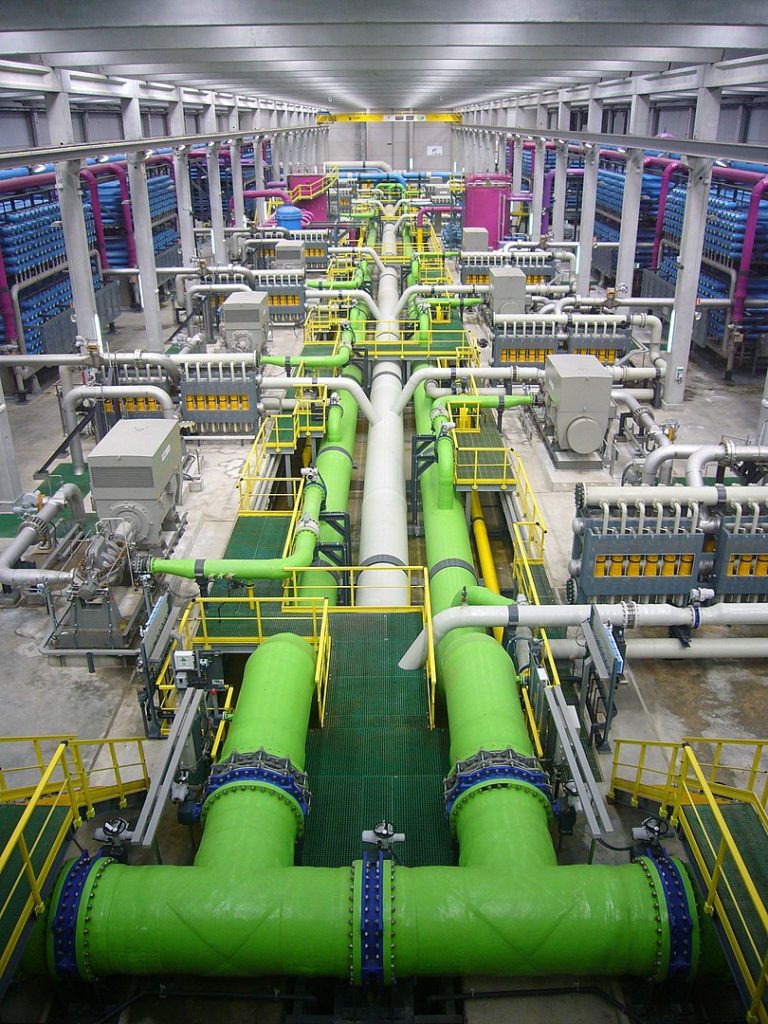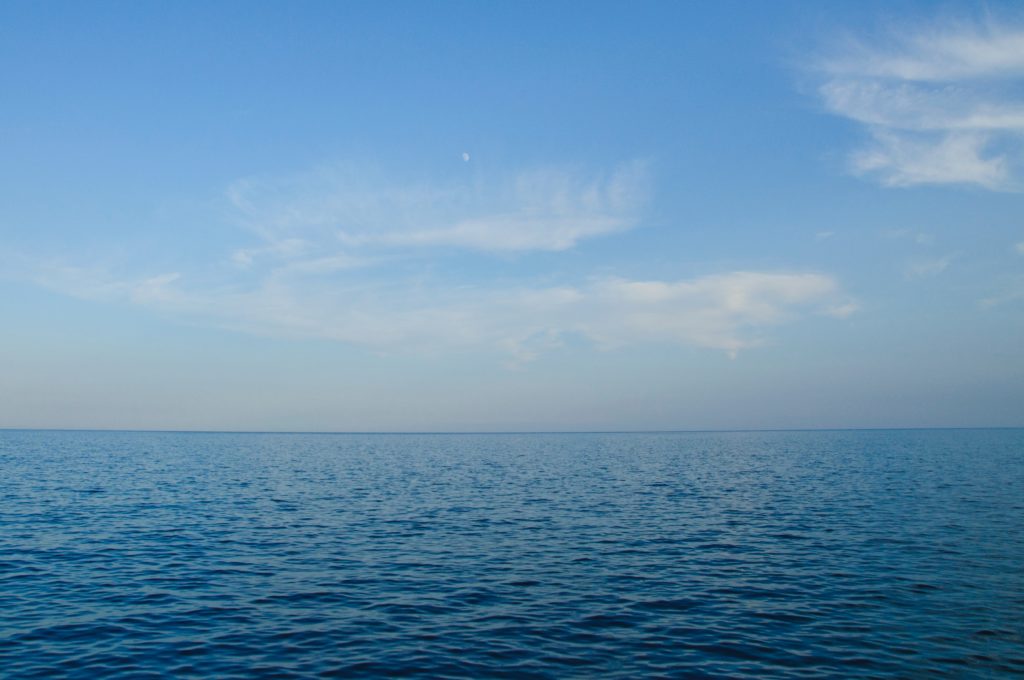
I learned this today. How does a desalination plant work? A desalination plant makes freshwater from seawater by using reverse osmosis.
Humans and animals obviously cannot drink salt water. Fish have adapted to be able to do it, but we have not. There is about 35g of salt in every liter of sea water. If we drink sea water we wouldn’t live for very long. Our blood has 9g of salt per liter. The extra salt from the seawater would draw the water out of our cells by osmosis. That water would enter the blood and the kidneys would draw it and the salt out. Your kidneys would use the water to excrete as much salt as possible in your urine. If you can replace this lost water with freshwater, then you would survive. If you can’t replace it, you will dehydrate and die.
There are 1.233 sextillion liters of water on Earth. A sextillion is 1 with 24 zeroes. That sounds like a lot of water, but 97% of that water is salt water and is in the oceans. The remaining 3% is freshwater, but 2.5% of that freshwater is locked up in glaciers, polar ice caps, the atmosphere, the soil, or is far under the ground. That means we only have 0.5% of the water on Earth available for drinking, growing crops, or raising animals.
That is still a lot and it works out to be about 8.4 million liters for every person on Earth. The problem is that all of the freshwater is not distributed evenly. Wind, weather patterns, the presence of mountains, and many other things can cause somewhere to get either more or less rain than somewhere else. Drought is very common in many places on Earth, which is why desalination is proving to be more and more necessary.
So, how does a desalination plant work? The first step is to get the water. Seawater is piped into a desalination plant from a depth of about 5 meters. This is to avoid any of the impurities that float on the surface. There is a lot of plastic on the surface of the sea. The water is pumped in at a slow speed of 0.1 meters per second to allow fish to swim away.

Once the water is in the plant, it has to be cleaned. This is exactly the same as for freshwater. There will be impurities, biological matter, and particles in the water. These are filtered out using a range of smaller and smaller filters.
The next step is to remove the salt. In our bodies, the salt would draw the water out of our cells through osmosis. Osmosis is the process where a fluid is pulled from an area of low concentration to an area of high concentration through a semi-permeable membrane. In a desalination plant, the salt is removed from the water using reverse osmosis.
The desalination plant pushes the water through semi-permeable membranes. There are thousands of semi-permeable membranes and they have holes that are atom sized. They are polymers and they are about 0.2 microns thick. There are layers of different polymer meshes that make up one semi-permeable membrane.
The water doesn’t naturally want to go through the membrane, so the plant uses intense pressure to do this and it forces the osmosis to go the other way. The high pressure forces the water molecules through the membrane, but the salt molecules cannot pass through and they are left behind. It’s not left as dry salt, though. Not all of the water goes through the membrane and the end result is 50% freshwater on the other side of the membrane and 50% seawater with twice the saltiness it had before on this side of the membrane. This seawater is released back into the ocean where it is diluted rapidly.
The freshwater that comes out the other side of the membrane is actually too pure to drink. It goes through a promineralisation process. It has carbon dioxide and liquid lime added to it. The lime makes the water harder and drinkable and seawater has become drinking water.
This process has been heralded as the savior of the world, but it does still have some problems. It is much cheaper than it was when the process was invented in the 1950s but it is still expensive. The membranes are one of the most expensive single pieces. About 10% of the entire cost of the process is in the membrane. The membranes have to constantly be kept clean as well.
The main problem with desalination plants, though, is that they have to be near the oceans. That stands to reason, but the majority of places that are suffering from droughts are not near any oceans. The solution might be to pipe water from the desalination plants to these areas, or to deliver it overland. There may be another solution that has not yet been found. And the cost of desalination plants will probably come down as the technology improves.
So, how do desalination plants work? They force the seawater under high pressure through a semi-permeable membrane. The water molecules pass through, but the salt molecules don’t. And this is what I learned today.
Sources:
https://www.phoenix.gov/waterservicessite/Documents/All%20the%20Water%20in%20the%20World.pdf
https://www.mentalfloss.com/article/646229/what-actually-happens-if-you-drink-saltwater
https://www.usbr.gov/mp/arwec/water-facts-ww-water-sup.html
https://cosmosmagazine.com/earth/water/how-does-a-desalination-plant-work/
https://www.carlsbaddesal.com/how-it-works.html
https://science.howstuffworks.com/environmental/earth/geophysics/h2o.htm
